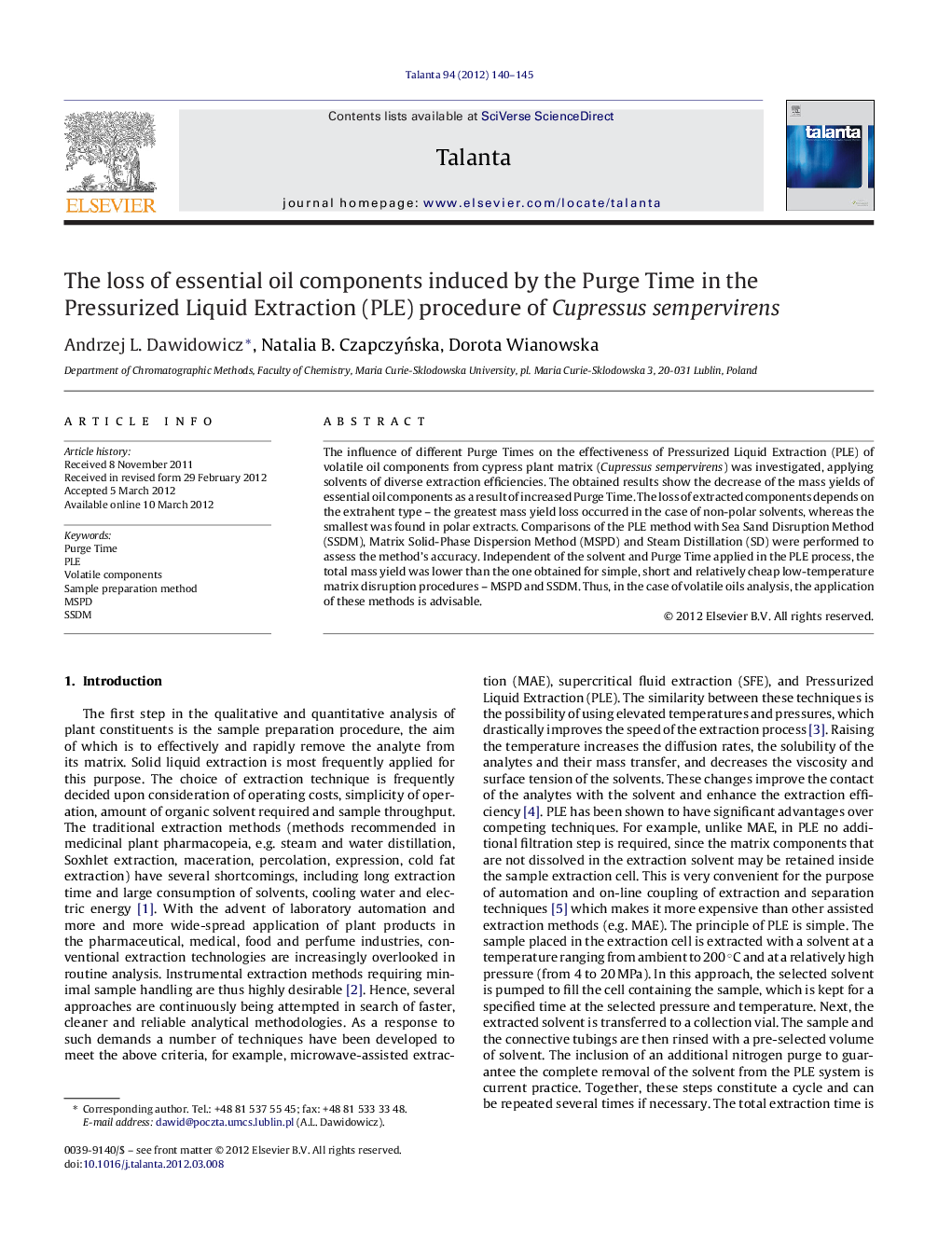| Article ID | Journal | Published Year | Pages | File Type |
|---|---|---|---|---|
| 1245626 | Talanta | 2012 | 6 Pages |
The influence of different Purge Times on the effectiveness of Pressurized Liquid Extraction (PLE) of volatile oil components from cypress plant matrix (Cupressus sempervirens) was investigated, applying solvents of diverse extraction efficiencies. The obtained results show the decrease of the mass yields of essential oil components as a result of increased Purge Time. The loss of extracted components depends on the extrahent type – the greatest mass yield loss occurred in the case of non-polar solvents, whereas the smallest was found in polar extracts. Comparisons of the PLE method with Sea Sand Disruption Method (SSDM), Matrix Solid-Phase Dispersion Method (MSPD) and Steam Distillation (SD) were performed to assess the method's accuracy. Independent of the solvent and Purge Time applied in the PLE process, the total mass yield was lower than the one obtained for simple, short and relatively cheap low-temperature matrix disruption procedures – MSPD and SSDM. Thus, in the case of volatile oils analysis, the application of these methods is advisable.
► Cypress essential oil components were extracted by Pressurized Liquid Extraction (PLE). ► 60 s, 30 s, 20 s, 0 s Purge Times and different solvents were applied. ► It was found that the increase of Purge Time provokes the decrease of the essentials oil components mass yield. ► The greatest mass yield loss is observed for non-polar solvents, whereas the smallest – for polar ones. ► The application of sample disruption methods – Sea Sand Disruption Method (SSDM) and Matrix Solid Phase Dispersion (MSPD) appears to be more advisable in essential oil components analysis.
